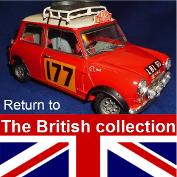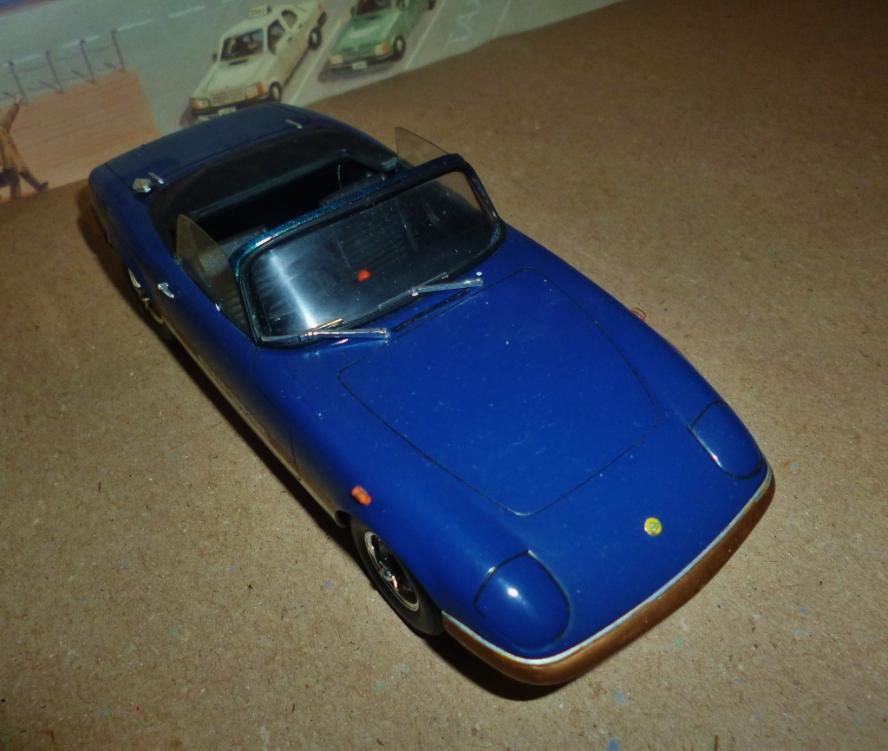
1968/74 Lotus Elan S3
Once in a while a car arrives that sets new standards of balance, control and performance. When that is created in a package of innovative design with ease of production built in, that car lights up the world and is still revered many decades after its launch.
In this case it is the Lotus 26; that is to say the Lotus ‘Elan’. A name that can be interpreted as an impetuous rush, dash or perhaps vivacity, seldom has a car lived up to its name as superbly as the Elan. Built by Colin Chapman’s Lotus Cars of Delamare Road, Cheshunt, Hertfordshire, between 1962 and 1975 it is the car about which the legendary writer, racer and motorsport historian Denis Jenkinson said:
“It is not cheap, but to anyone contemplating buying a cheaper two-seater sports car, I would sell the television set, the washing machine, give up smoking, even give up drinking, but scrimp and save and buy an Elan and you won't be disappointed."
In 1958 Colin Chapman released the Elite onto the roads of the world. It was a fantastic design, but difficult to build meaning expensive to buy. The car didn’t sell well, especially in the USA, where the waiting times due to the complicated build process were unacceptable. Chapman was forced to rethink his design idea but he simply had so many good ideas he couldn’t decide what to use first. Fortunately, having their own new ‘purpose-built’ factory, at Cheshunt, proved the key to Lotus’ future. The development of the classic Lotus Ford four-cylinder Twin-Cam engine and a better understanding of how to design in ease of production led to a new car that can rightly be described as the car that firmly established as a sports car manufacturer.
Chapman’s early thoughts for the car, which he saw as the replacement for the venerable Lotus Seven, were for an open two seat sports car with no doors. However, Ron Hickman had been brought in to take charge of Lotus Developments, and the Lotus 26, and he was able to persuade Chapman to move in a different direction.
This came about because Hickman wanted to get the teams working on the engine, transmission, suspension, and brake development via the use of a temporary rolling backbone chassis. When Chapman agreed he saw a new positive in the idea so instead of a fibreglass monocoque like the Elite, the Elan would have a fibreglass body bolted onto a simple steel backbone chassis to which all the engine, transmission, suspension etc fitted. It was strong, rigid, light and easy to manufacture; and became the standard design point for every Lotus production road car for almost three decades thereafter.
The mild steel backbone chassis was the main stressed member providing by far the largest proportion of the car’s torsional rigidity. A short centre section became wider at the front where it carried a Ford engine and a standard Ford gearbox. The rear end of the chassis also widened but to a lesser extent to house the final drive unit. It widened as far out as the front but in a more severe ‘Y’ angle. More importantly this end held two towers for the coil over shock Chapman Strut rear suspension. This gave the classic front-engine, rear-wheel-drive system predominant since Levassor designed it for Panhard and Levassor cars at the end of the 1800s.
Ford’s pre-crossflow Kent 1,498cc 4-cyl’ engine, bored out to 1558cc did away with the old pushrod system but had a new twin-cam alloy head designed by Harry Mundy. Lotus also used lightweight alloys for the new cam covers & timing chest. Apparently, this engine, with carburettors from Weber, Dell'Orto or Zenith-Stromberg (depending on model), was capable of as much as 115hp and the rights to it were later purchased by Ford and renamed the "Lotus-Ford Twin Cam". A proven technologically advanced DOHC engine it went on to be used in many different racing car designs not just by Lotus and Ford themselves but many independent racers too. For a while the final assembly of these “Twin-Cam” engines was done at the old Villiers JAP premises. Like the engine the 4-speed synchromesh manual gearbox and differential were also sourced from Ford UK, the internals generally remained the unchanged, with different ratio options made available, but housed in lighter alloy casings.
The Lotus rear carrier held the Ford differential but converted to run an independent rear suspension setup. The use of Rotoflex drive couplings, "rubber doughnut" couplings widely used at the time on road and track, connected the diff’ output shafts to the rear hubs. This system was found to come with its own set of problems for novice sports car drivers and was eventually replaced by half-shafts with CV joints.
Suspension was fully independent all-round the front being by Lotus-designed double wishbones holding converted Triumph GT6 uprights and coil over shocks at the front, and at the rear a Chapman Strut design consisting a modified Ford Cortina front struts with coil springs over them and a rubber "Lotocone" coupling it to the chassis tower a the top and a "A frame" wishbone at the bottom carrying a cast aluminium wheel-hub upright. A very simple three connection point system that proved surprisingly effective.
Steering also came from a standard road going background being a classic rack and pinion type manufactured and used by Triumph in the GT6, Herald, Spitfire, Vitesse, etc which can be traced back to Alford & Alder in origin. Having no power assistance, the Elan’s steering was direct but gave great feel and feedback to the driver.
The brakes were Girling discs, 9.5in at the front and 10in at the rear. Initially the rear brakes were desired inboard but that wouldn’t work with the Rotaflex drive-shaft couplings so went to the standard outboard position for production. Initially there was no servo assistance as the car was so light it wasn’t needed, but the provision for servos was provided. Later models and SE variants did get power assisted braking.
While Ron Hickman and the chassis team brought their work together the body construction and styling was handled by John Frayling. The fibreglass body fitted over and around the backbone being attached by bolts at 16 strategic points. The hansom body, although not highly stressed did give that last measure of rigidity to the overall structure; one might even consider it a subframe. Much time was spent getting the ride comfort, noise suppression, heating and ventilation, and seating positions right too as the experience of the Elite had taught the team a lot so that strength could be built into comfort and practicality while not adding unnecessary weight. Wide door openings and low sills gave easy access for the driver and passenger who were also well protected (for the era) in frontal or rear end collisions.
It proved a to be a beautiful and effective masterpiece riding on an equally masterful chassis. In the end the bodies far outlived their chassis with most of today’s Elan having had at least one chassis change because of decay and occasionally accident damage. Just 145in long, 56in wide and 45.5in the little Elan, riding on its 84in wheelbase, weighed in at just 1,420’lbs.
In short, Lotus used the then modern technologies to create cutting-edge features in a superb and agile high-performance sports car, with excellent handling, that could be easily maintained by the owner and was economic to produce due to relying on so many mass-produced parts. Alongside those mentioned above came the engine electrical systems from Lucas and dash’ instrumentation and additional electrics from Smiths.
The Elan was first shown at the October, 1962 Earls Court motor show. It was very different to anything else on sale at the time and competitively priced. Lotus had plenty of attention already because of the success of the Lotus 25 in F1 and Colin Chapman stoked the buyers up with launch literature that included a quote from him stating, "We wanted to build you a fun car." And they did just that.
The delightful Elan had astonishing road-holding, handling and agility that was second-to-none, in a package that cost just £1095 as a kit or £1499 built up. For comparison, the price of an E type Jag’ at its launch in 1961 was £2097 for the roadster version and £2196 for the coupe. The Elan might not have had the looks history or background of a Jaguar but it would soon become the standard by which all other small sports cars would be judged by for at least a decade. Some say it still is.
The initial performance or the Elan was impressive for the time, 0-60mph in 7.1sec’s and reaching the quarter-mile in 15.7sec’s achieving 87mph. Indeed, in outright acceleration up to about 90mph the Elan could embarrass almost any other supercar of the era. This “electrifying performance” was due to the Elans light weight and powerful engine, combined with handling and road holding that gave the car superb agility and high cornering speeds. A well driven Elan could maintain high average speeds and on a dry road/track could outclass almost any other road car.
The first range to bear the Elan name would remain in production from 1962 to 1975 being upgraded and modified for markets all around the world.
Available as roadster, coupe, and later +2, and with a range of engine sizes the Lotus 26, Elan was a landmark car that really help provide Lotus with credibility and stability in the road car market. So, Lotus took it to the track too.
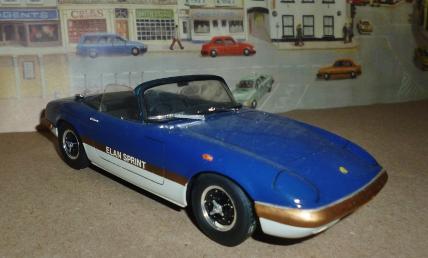


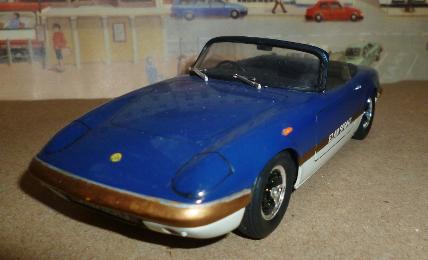
The Lotus 26R, as the racing version was called, was an Elan with more ‘pep’. Never intended for the track the Elan was supposed to be a touring car, Chapman himself said so. However, to the general public every lotus, however unsuitable, was assumed to be a racing car. This prompted Colin Chapman to say: “When we announced the Elan we said 'This is a touring car, it is not intended for racing and have done no competition development on it.' The fact that customers bought them and tried to race them was originally no concern of ours, but in the second year we thought, well, if these people insist on racing them then we'd better get down to some proper development. They were too softly sprung, too softly damped, tore their doughnuts apart and had all sorts of drama, but it was the name, and people thought they must be racing cars."
Lotus’ development resulted in the first racing version being released in 1964. In true Chapman style everything that could be lightened, was, and everything noted to fail in racing conditions was replaced with a better option. Sliding spline driveshafts replaced the rubber doughnut joints, bigger anti-roll bars, dual circuit brakes from twin master cylinders through light alloy callipers upgraded the braking which needed to cope with the added speed of Cosworth-tuned engine capable of up to 160bhp.
body was lightened but also strengthened in critical places, especially around the suspension pick-up points. The arches were flared to cope with wider tyres and the pedal mountings were repositioned to help the driver when he needed to use the heel-and-toe technique.
All this "proper development" resulted in a kit of parts costing £1995 for the owner to put together and set up to his/her own preferences.
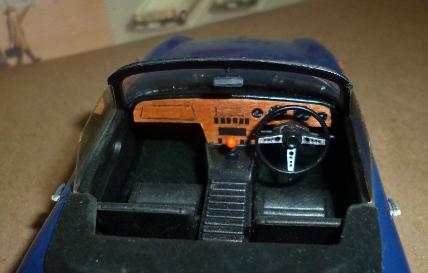
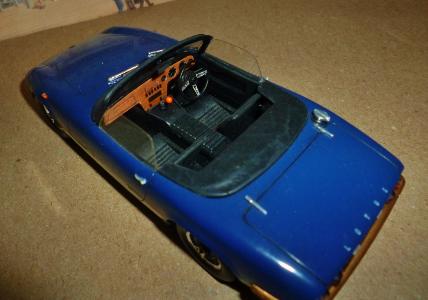
An important part of producing anything is having designs that aid production and a production system that works. Lotus brought in former Rolls-Royce production engineer, John Cope-Lewis, as their new head of production to ensure the Elan would be practical to build. His work alongside Ron Hickman and John Frayling meant that the Elan was as easy to produce as could be possible, and it shows in the numbers of Elans built.
By September, 1965, Lotus had produced 1,000 Elans and the firm was looking forward to its new production facility being at Hethel being completed. When it was, in 1966, Lotus could produce its own bodies and chassis, and with a new engine building facility too, Lotus would be able to build more cars and increase quality standards too. In April, 1967, Lotus announced a total of 4225 Elan's had been produced. When Production was stopped in mid-1973 the total number of Elans built was quoted at 12,224 with an additional 5200 Elan +2 models. However, Lotus did not keep an entirely sequential serial number system and other sources would suggest the real number could be between 8,676 & 9,153. For a small company Lotus had still produced a huge number of Elans in just over ten years and cemented their place in the road car market.
It is thought that as of April 2018, there are around 1,100 Elans still running (including approx’ 330 of the +2 model) in over 30 countries. The Lotus Elan registry is a voluntary list so the number of remaining Elans may well be higher.
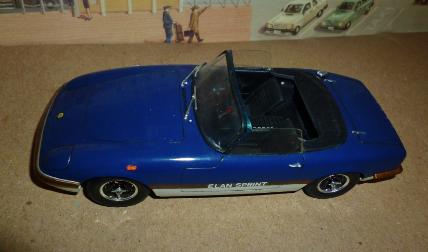
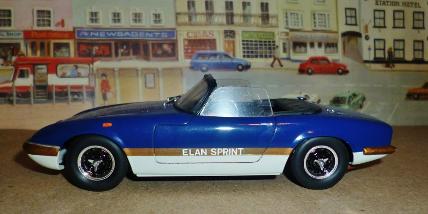
Lotus Elans, with their curved windshield, roll-up windows and pop-up headlights, became a symbol of 1960s Swinging London. Finding fame on the streets, on race tracks and in television programs like ‘The Avenger’ the Elan became an icon of a car.
A quintessentially British sports car that rivalled, and bested more established sportscar manufacturer’s efforts. Still held by some as a benchmark for handling, F1 designer Gordon Murry is known to have said that his one regret regarding his McLaren F1 supercar design was that he “could not give it the perfect steering of the Lotus Elan.”
Sports Car International listed the tiny Lotus Elan, which had owners as diverse as F1 world Champion Jim Clark, comedian Peter Sellers and musician Noel Redding, as #6 on their 2004 list of the ‘Top Sports Cars of the 1960s’. That in itself is an achievement considering the opposition.
But the truth is, the Elan was (and to many still is) a superb design that was everything a sports car should be.
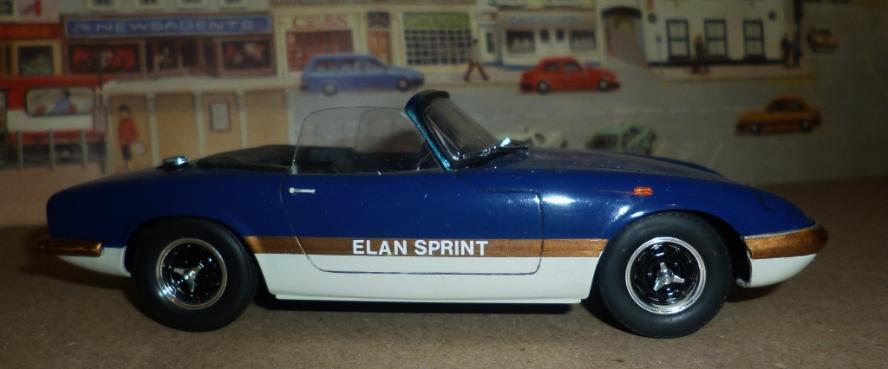
This 1/24th scale Gunze Sangyo Kit, # G-183:1200, was released in 1990. It was also released as a Lotus Type26R racing version in 1994, kit # G-363. Furthermore, there is a series of “High-Tech” Elan kits released by Gunze Sangyo which give fantastic levels of detail for the builder to explore. All the kits are highly sort after today, especially the high-tech kits which command high prices in mint condition.
Rod built this example in April 2001. While the kit is quite accurate and straightforward to build it is a curb-side model with limited chassis detail. If “what you see is what you get”, then what you see is more than good enough for a decent model to put on your shelf
It is primed with Halfords plastic primer followed by Halfords acrylic car spray paints for the body colours. Humbrol enamels and Citadel acrylics and ink washes (brush applied), were used for the interior details.
